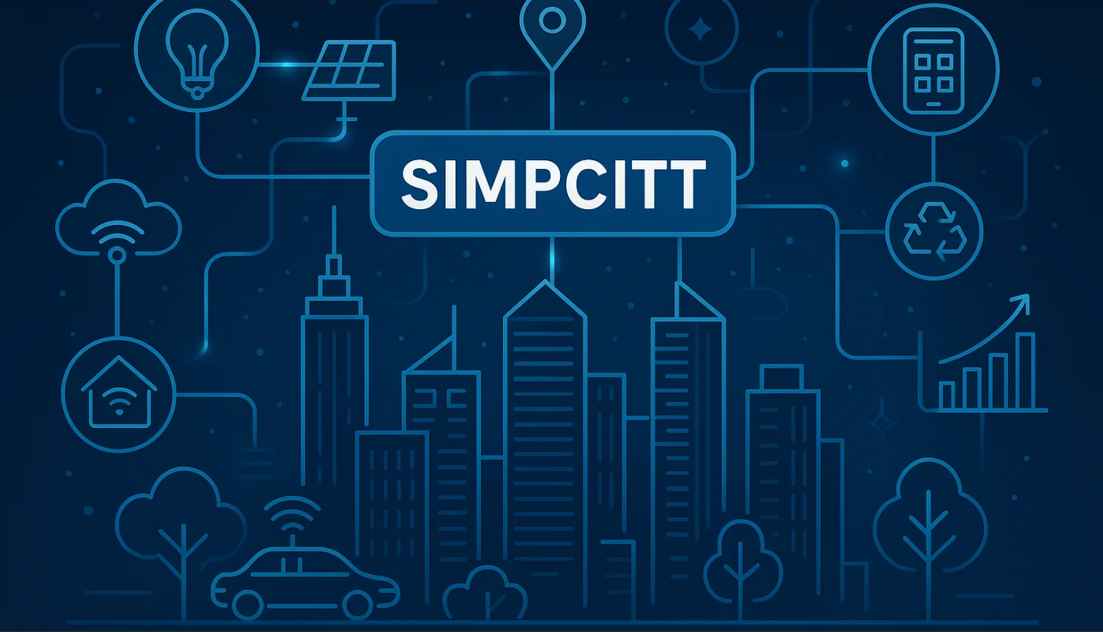In today’s fast-paced world, where urban sprawl and digital noise dominate daily life, a new concept has emerged to offer clarity and balance: Simpcitt. This term, gaining traction across platforms like TikTok, Reddit, and urban planning forums, represents a multifaceted movement that blends simplicity with the complexities of modern living. Simpcitt is not just a buzzword; it’s a philosophy that spans lifestyle choices, technological advancements, and a mindset shift toward intentionality and minimalism. As people grapple with information overload and crowded cities, Simpcitt provides a refreshing approach to creating physical, digital, and emotional spaces that prioritise efficiency, sustainability, and well-being.
What Is Simpcitt? A Deep Dive into Its Meaning
Simpcitt, a portmanteau of “simplicity” and “city,” encapsulates a philosophy of intentional living tailored to urban and digital environments. It emerged as a response to the complexities of modern life—think crowded cities, endless notifications, and the pressure to keep up with trends. At its core, Simpcitt advocates for stripping away the unnecessary to focus on what truly matters: functional spaces, meaningful connections, and mindful technology use.
The term likely blends “simp” (suggesting simplicity or, in some contexts, emotional devotion) with “city,” reflecting a vision of urban living that is streamlined yet vibrant. It’s a reaction to digital overload, where apps and notifications overwhelm, and urban complexity, where congestion and pollution challenge quality of life. Simpcitt promotes a lifestyle that embraces minimalism, a digital approach that prioritises user-friendly tools, and urban designs that enhance sustainability and accessibility.
The Evolution of Simpcitt Culture
Simpcitt’s journey began in the digital realm, evolving from internet slang to a broader cultural movement. The term “simp” originally described someone overly attentive, often humorously, in online communities like TikTok and Twitch. Around 2021–2022, “Simpcitt” emerged, possibly as a playful misspelling of “SimCity,” but it quickly took on a deeper meaning. Social media platforms amplified its spread, with hashtags like #Simpcitt and #SimpLife garnering millions of views, particularly among Gen Z.
Influencers and content creators embraced Simpcitt’s ethos of emotional openness, challenging toxic masculinity through memes and self-deprecating humour. This cultural shift transformed Simpcitt into a symbol of authenticity, encouraging people to express emotions freely and prioritise genuine connections. Today, Simpcitt culture blends humour, self-awareness, and a commitment to simplicity, influencing everything from online communities to real-world lifestyle choices.
Core Principles of the Simpcitt Lifestyle
The Simpcitt lifestyle is guided by three core principles that shape how adherents navigate their daily lives:
Embracing Minimalism: Simpcitt encourages decluttering physical and digital spaces. This means owning fewer, high-quality possessions, simplifying routines, and reducing digital distractions like excessive apps or notifications.
Prioritising Genuine Connections: In an era of superficial social media interactions, Simpcitt emphasises deep, meaningful relationships. It’s about investing in people who matter, fostering community, and valuing quality over quantity.
Mindfulness and Intentionality: Simpcitt advocates for purposeful technology use, such as setting screen time limits or choosing tools that enhance life. It promotes mindfulness to ensure digital and urban environments support well-being.
These principles create a framework for a simpler, more fulfilling life, aligning with broader trends like the KonMari method and digital detoxes.
Simpcitt in Urban Planning and Smart Cities
Simpcitt’s influence extends to urban planning, where its principles of simplicity and efficiency are reshaping city design. Smart cities, which leverage technology for resource management, embody Simpcitt ideals. For example, AI-driven systems can optimise traffic flow, reduce energy use, and improve waste management, making urban living more sustainable and less chaotic.
Cities like Singapore and Barcelona serve as models, using data analytics to enhance public transportation and green spaces. Simpcitt-inspired urban design prioritises walkable neighbourhoods, eco-friendly buildings, and reduced reliance on cars, creating environments that are easier to navigate and healthier for residents. These initiatives align with Simpcitt’s vision of functional, responsive urban spaces by integrating technology with simplicity.
City | Simpcitt-Inspired Initiative | Impact |
|---|---|---|
Singapore | AI-driven traffic management | Reduced congestion, lower emissions |
Barcelona | Superblock model for walkable neighbourhoods | Enhanced community spaces, less traffic |
Copenhagen | Green infrastructure and bike-friendly design | Improved air quality, active lifestyles |
Digital Transformation Through the Lens of Simpcitt
In the digital realm, Simpcitt drives a transformation toward user-friendly, minimalistic technology. Companies are designing apps and websites with clean interfaces, fewer features, and intuitive navigation to reduce cognitive load. For instance, minimalist design trends in web development prioritise straightforward layouts, aligning with Simpcitt’s goal of reducing digital clutter.
Simpcitt also encourages purposeful engagement with technology. This might involve using apps that block distractions, setting specific times for checking social media, or choosing platforms that reflect personal values. By streamlining digital interactions, Simpcitt helps users focus on meaningful tasks and relationships, enhancing productivity and mental clarity.
Psychological and Social Impacts of Adopting Simpcitt
Adopting Simpcitt principles can yield significant psychological and social benefits. Reducing digital noise, such as limiting notifications or curating online content, can lower stress and improve focus. Research suggests that minimalism and mindfulness, central to Simpcitt, contribute to better mental health and increased happiness.
Socially, Simpcitt fosters deeper relationships by prioritising quality interactions. This can strengthen community ties and create a sense of belonging. However, challenges exist. Some may find minimalism restrictive, and societal emphasis on consumption can make Simpcitt’s principles feel countercultural. Additionally, implementing these changes in urban or digital contexts may face resistance due to entrenched systems.
Simpcitt’s Influence on Consumer Behaviour and Marketing
Simpcitt has reshaped consumer behaviour, with people gravitating toward brands that embody authenticity, transparency, and simplicity. This is evident in the popularity of sustainable fashion, minimalist products, and experiences over material goods. Companies are responding by offering eco-friendly packaging, functional designs, and marketing that emphasises quality and values.
For example, brands like Patagonia and Everlane align with Simpcitt by prioritising sustainability and transparency. Marketing strategies are also shifting, with companies sharing authentic stories to connect with consumers tired of superficial advertising. This trend reflects Simpcitt’s broader cultural impact, encouraging a move away from consumerism toward intentional purchasing.
The Future of Simp citt: Trends and Predictions
The rise of Simpcitt in digital culture reflects a collective desire for authenticity and simplicity. From social media memes to smart city initiatives, it captures attention by addressing real-world challenges with practical solutions. This blog explores Simpcitt’s origins, evolution, principles, and its impact on urban planning, digital transformation, psychology, consumer behaviour, and future trends, offering a comprehensive guide to understanding this dynamic movement.
Simpcitt’s future looks promising, with the potential to influence multiple domains:
Urban Expansion: More cities may adopt Simpcitt-inspired designs, developing smart cities or retrofitting existing ones for efficiency and sustainability.
Technological Integration: Advances in AI and Iot could enhance Simpcitt’s goals, but there’s a risk of added complexity, requiring a focus on simplicity.
Community Building: Online and local communities will sustain the movement, sharing ideas and advocating for change through collective action.
Emerging technologies may support Simpcitt by personalising urban and digital experiences, but they could also challenge its minimalist ethos if not carefully managed. The movement’s success will depend on its ability to balance innovation with simplicity and foster inclusive communities.
Conclusion
Simpcitt represents a holistic approach to navigating the complexities of modern life. By blending simplicity with urban and digital innovation, it offers a path to intentional, sustainable, and fulfilling living. From redesigning cities to streamlining technology and fostering authentic connections, Simpcitt’s principles resonate with those seeking balance in a chaotic world. As the movement grows, it has the potential to shape a future where simplicity and mindfulness are at the heart of how we live, work, and interact.
Whether you’re a city planner, a tech developer, or someone simply trying to feel less frazzled, Simpcitt holds something for you. It invites us to question what truly adds value, to strip away the rest, and to build lives—and cities—that feel spacious, supportive, and soulful. As we move forward, let Simpcitt be your guide: a gentle reminder that simplicity and city life can not only coexist but flourish together.



